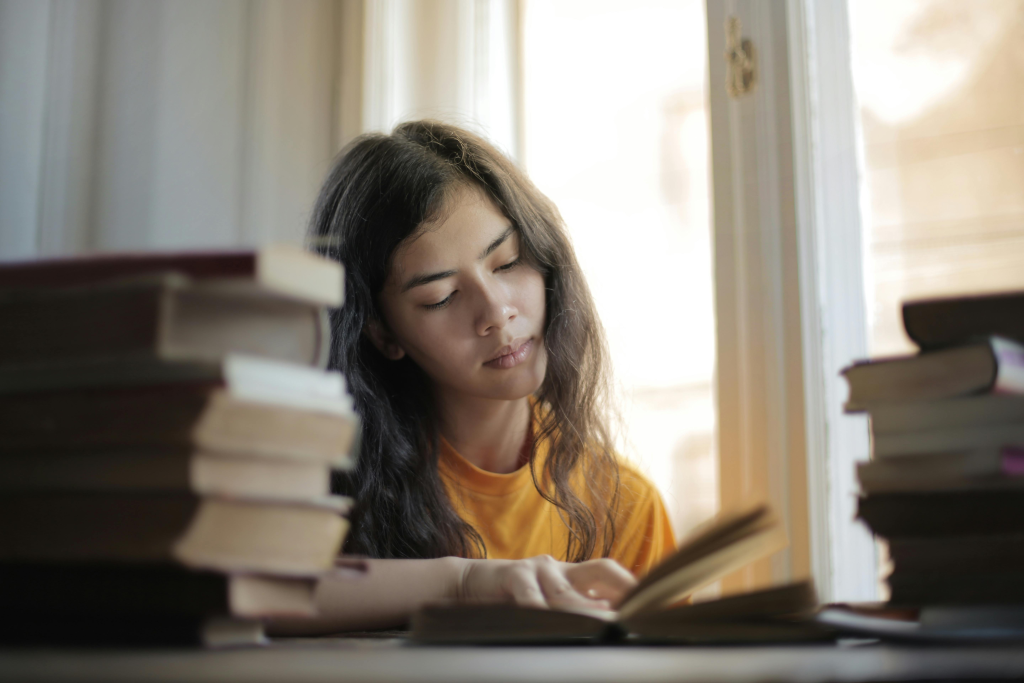Description: Private tutor Julianna specialises in teaching German, Russian as well as English as a Foreign Language. In this article, she speaks about her experience teaching children with dyslexia.
As someone who has taught languages in various academic settings and worked with all sorts of students, I have always been interested in ways to help people who process information differently.
One of my students at a medical university in Ukraine had a severe case of stutter and dyslexia.
Nevertheless, she spoke excellent English, much better than her peers who could pronounce words but were not always bothered to learn them.
She went on to become a family consultant and has been helping people overcome difficulties just like she has overcome hers.
In this post, I am going to talk about the teaching methods that have proven to be efficient when teaching children with learning difficulties and share my thoughts and tips regarding what works best.
What is Dyslexia?
So, first, let’s answer the question ‘what is dyslexia?’
Dyslexia is a learning difference which primarily affects reading and writing skills.
It can manifest itself differently at different ages and phases of education, which often makes it very difficult to diagnose.
People with dyslexia often have difficulties processing and remembering information that they see and hear, which can then have an impact on their literacy skills.
Around 10-15% of UK children have a diagnosis of dyslexia.

This means that around 3 children in every class in the UK have dyslexia or struggle with literacy.
However, it is essential to remember that thinking differently has lots of advantages to it.
Many dyslexic children develop strengths in such areas as reasoning and in visual and creative fields.
Teaching Methods
As for teaching methods, I find multi-sensory methods both engaging and efficient.
Visual, auditory and kinetic activities stimulate different parts of the brain.
Learners with dyslexia think differently. They rely more on the right hemisphere, which means they respond better to visual codes.
They have a specific difficulty cracking the written code but no comprehensive problems.
Colourful, easy and fun are the three boxes I try to tick when I am preparing lessons for students with learning difficulties.
For instance, they enjoy telling stories using story maps or comic strips.
As we talk about stories, we pay attention to different levels, from the story structure to how individual sentences are constructed.
These foundations come in handy later, when we do more writing, allowing the learners to focus on vocabulary or grammar, paying specific attention to sentence openers, conjunctions or different synonyms.
Different Activities
Children with learning difficulties often find it difficult to sit still for long periods of time. It is crucial to find time for movement breaks, encouraging learners to move around the classroom.
It is always fun to exchange information on different cards. For example, students have strips of paper with different parts of a story that they have to put together in the correct order.
When it comes to writing, it is useful and fun to do table writing, air writing or sand tray writing.

This allows children to do it in as many different ways as they want to. Let learners make and correct their own mistakes, reminding them that mistakes are part of the process.
Choosing activities with structure (true/false, multiple-choice or matching exercises) helps students focus without getting confused or overwhelmed.
It is always better to activate one skill at a time. For example, do not comment on the spelling if it is not what I am trying to assess.
Attitude Development
I prefer to adapt teaching materials using larger fonts and light-coloured backgrounds.
I engage colours to differentiate between learning points on the whiteboard. This creates handouts that students can personalise by highlighting and annotating.
It is essential to promote a ‘can do attitude. Unfortunately, some of the learners with dyslexia I have met have a history of not being able to accomplish certain tasks.
It’s vital to boost their self-esteem. Even if the first attempts are not perfect, the next time students face a similar problem they will think ‘I have done it before, and it was fine. I can do this again.’
Thus, by repeating this skill cycle multiple times, by the exam time learners have done it over and over again.
They are much better at it and more confident in their abilities.
I both enjoy and consider it very important to share ideas and best practices with as many colleagues as possible in order to facilitate spreading activities that really help children with learning difficulties.
By tutor Julianna. Contact Us




